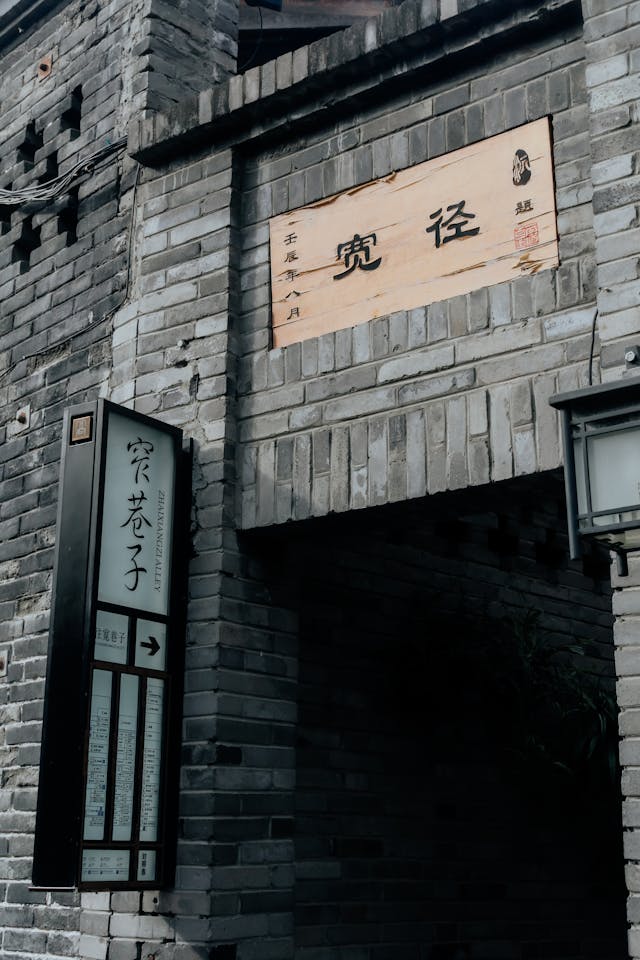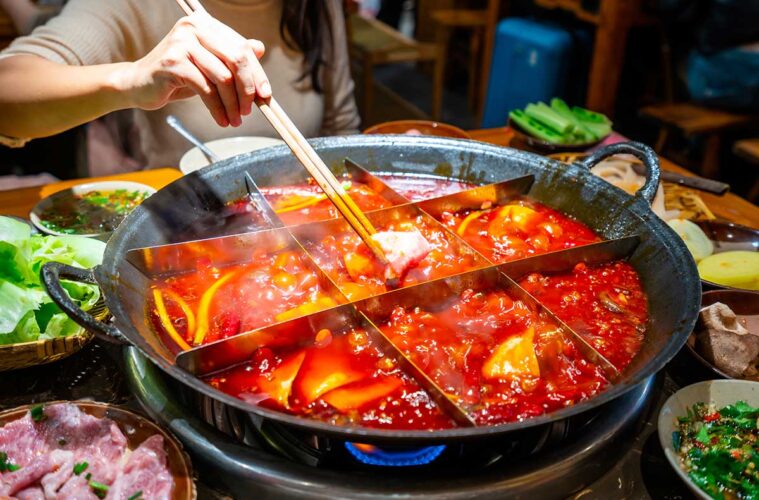Hot pot is a cornerstone of Chinese cuisine, especially in Sichuan province, where the fierce flavours of Chongqing and Chengdu hot pot offer a delicious dilemma. Though these spicy styles share common roots, they each bring their own unique flair to the table. From intense heat to balanced broths, and bustling dining scenes to laid-back atmospheres—here’s how to find the right hot pot experience for you.
Flavour Battle – Taste Profiles of Chongqing and Chengdu Hot Pot
Chongqing Hot Pot
Chongqing hot pot is famous for its spiciness and flavour. The Sichuan peppercorns and beef tallow provide for a numbing and fragrant experience. The traditional nine-grids pot allows diners to have different levels of spiciness and little floating ingredients to suit everyone’s taste. Recommended ingredients are duck blood, tripe, and yellow throat, which are often found locally. They are amazing in the hot pot broth.
Chengdu Hot Pot
Chengdu hot pot has different flavour profiles that emphasise balanced combinations of flavours and aromatic spices. But it remains spicy. For instance, the popular ‘yin-yang’ pot has one side that is spicy and the other more mild, symbolising the degrees of spice in the broth. The dipping sauce, often consisting of sesame oil, garlic and scallions, is important to Chengdu hot pot because it adds another layer of flavour.
Travel & Taste – How to Include Hot Pot in Your China Tour
Where to Eat Chongqing Hot Pot
Chongqing offers a vibrant hot pot scene with iconic locations that blend culinary delights with stunning views.
- Hongyadong: The most famous thing about Hongyadong is the hot pot. At Hongyadong, you can really see tons of hot pot restaurants. These restaurants have various fresh ingredients provided, as well as a unique Chongqing food flavour. Walk into any of these hot pot restaurants, and you will see hot pot tables filled with steamy hot pots. Their broth is usually bright red with chilli peppers and spices, complemented by different meats and vegetables.
- Jiefangbei Food Street: This street, situated in the centre of Chongqing, is a haven for food enthusiasts. After indulging in hot pot, continue to see the nightlife and historical sights. Jiefangbei serves as a chance to experience Chongqing from a contemporary view through its shopping malls and trendy coffee shops.
- Ciqikou Ancient Town: Step back in time in this old town. You can enjoy traditional hot pot in a place that feels like the past. After the meal, you can visit the local cultural sites. The town is a nice place for a quiet afternoon. The buildings from the Ming and Qing dynasties are still well-kept.
Unique Experiences: Riverboat Hot Pot
To have a one-of-a-kind experience, you can consider hot pot on a riverboat or at a scenic restaurant with panoramic views of the city. These options give a wonderful opportunity to taste the local food and at the same time admire the wonderful view of Chongqing. It will be a floating dinner that includes the best of the city’s skyline.

Where to Eat Chengdu Hot Pot
Chengdu’s hot pot culture is deeply intertwined with its leisurely lifestyle and rich cultural heritage.
- Kuanzhai Alley: This alleyway holds a special history, which is why every hot pot lover should experience. After wandering through Kuanzhai Alley and admiring the old, authentic buildings, you can relax in a hot pot restaurant, enjoying the local flavour in the unique atmosphere of Kuanzhai Alley. It is also home to many tea houses and traditional snack shops, so it is perfect for a laid-back afternoon!
- Jinli Ancient Street: Jinli Street is undoubtedly a popular place to eat hot pot, and its lively vibe and traditional stores are just parts of the reasons. The charm of this street can make for a wonderful dining experience, and that is why it becomes one of the highlights during Chengdu tours. Not to mention other famous Sichuan dishes available on this street, such as mapo tofu and kung pao chicken.
Unique Experiences: Cooking Classes
Chengdu offers more than just its food. Hot pot cooking classes, a favourite experience of travellers, provide an opportunity to get hands-on experience with Sichuan cooking. In these enjoyable classes, you’ll learn some very practical techniques and ingredients that give Sichuan food its noted spicy character. And you’ll likely get to eat what you make or take some home, which is both a souvenir and a story for your China tours.
Practical Tips for Your Hot Pot Adventure
When to Visit
To enjoy hot pot in Chongqing and Chengdu, better to choose a cooler month, such as from October to April. The weather at that time is mild, and the hot pot provides a perfect way to stay warm.
Language and Etiquette
You can learn some simple Chinese sentences during Chengdu or Chongqing tours, as it might help improve your experience. Although it is right that many hot pot restaurants in tourist locations offer English menus. Local contact can be greatly improved with easy phrases like “Ni hao” (hello) and “Xie xie” (thank you). Also, pay attention to local dining etiquette, such as not to poke your chopsticks upright in your rice bowl since it is thought of as bad luck.
Find the Flavour Best for You
Whether you’re a seasoned hot pot lover or a culinary adventurer, exploring the differences between Chongqing and Chengdu hot pot can add a spicy twist to your China tour. With its rich flavours and cultural significance, hot pot is more than just a meal—it’s a journey through the heart and soul of Sichuan cuisine.

